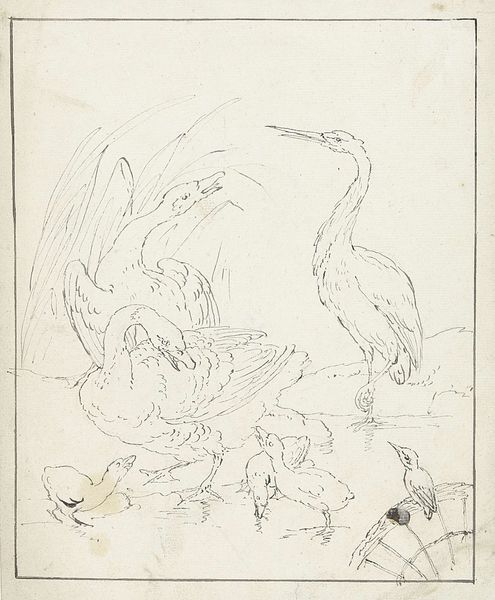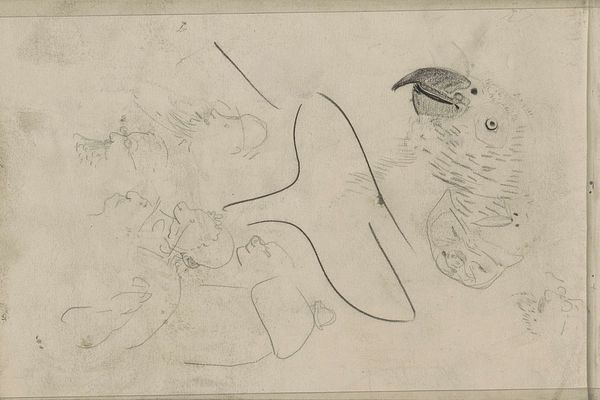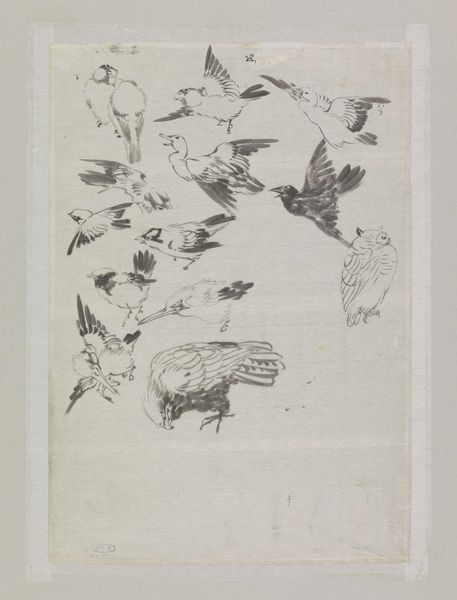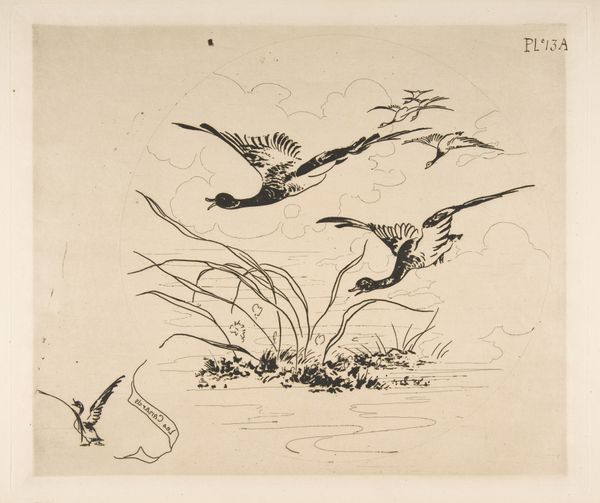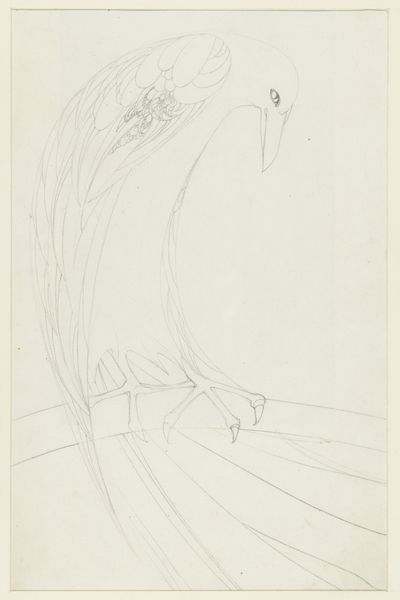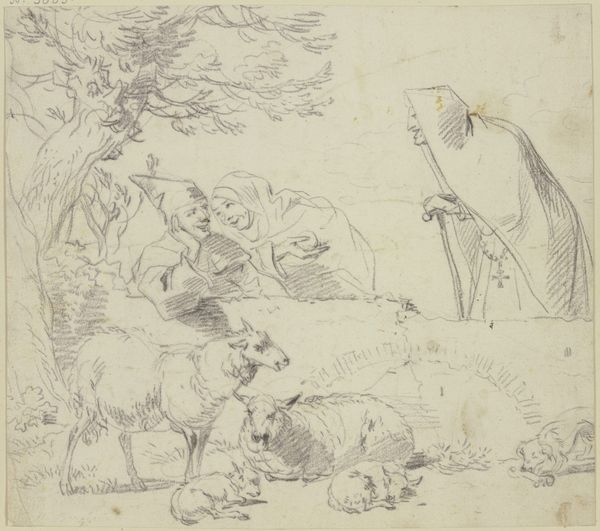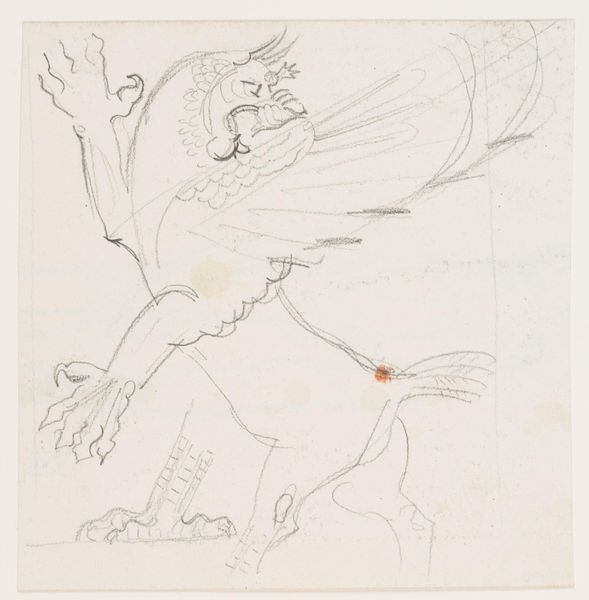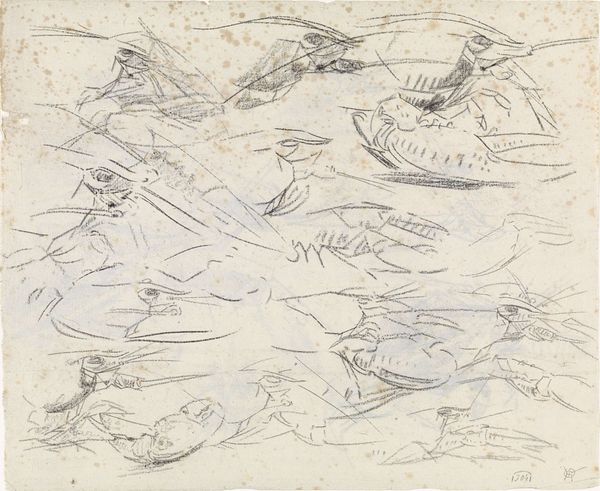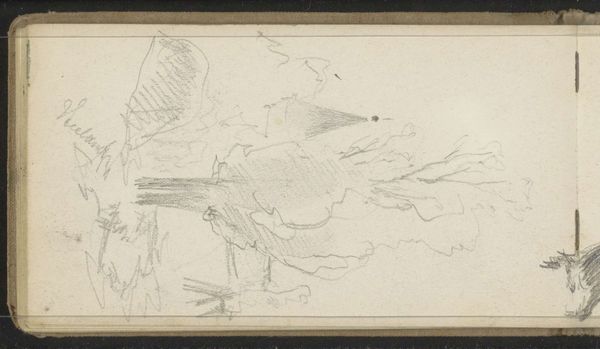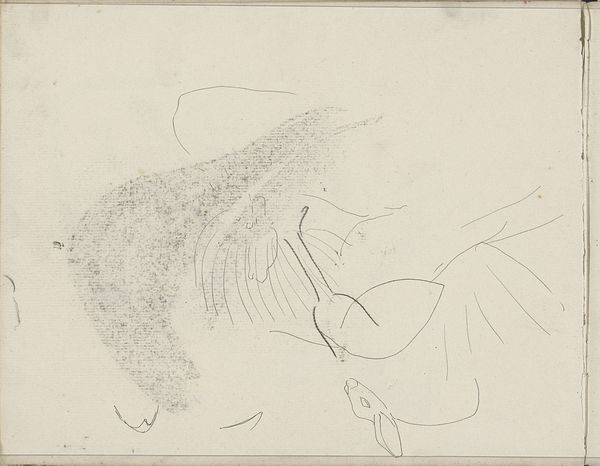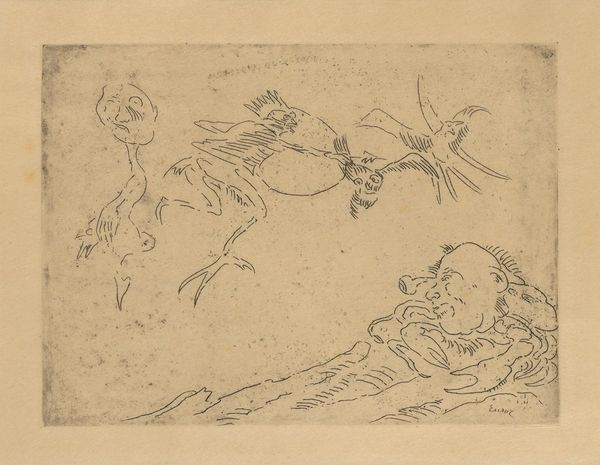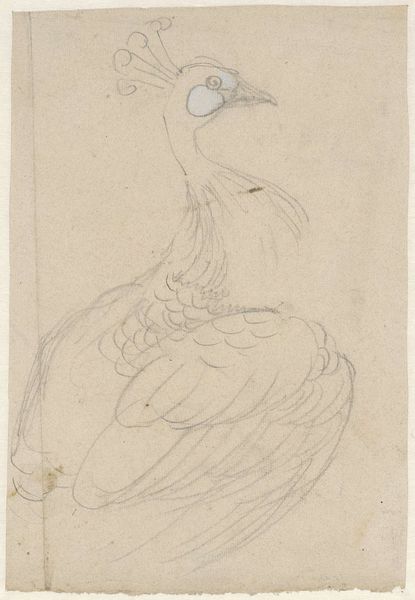
drawing, pencil
#
drawing
#
pencil sketch
#
asian-art
#
landscape
#
figuration
#
pencil
#
realism
Dimensions: height 264 mm, width 373 mm
Copyright: Rijks Museum: Open Domain
Ishikawa Kazan made this sketch of birds in Japan sometime in the early nineteenth century. Although it may appear to be a simple, naturalistic study, it's worth considering this work in the context of Japanese art institutions of the time. Kazan was born into a samurai family, and his artistic practice was influenced by his social standing. His paintings often reflect Confucian values of moral virtue, social harmony, and the importance of education, which were central tenets of samurai culture. Also, while Kazan was trained in traditional Japanese painting techniques, he was also exposed to Western art through imported prints and books. This exposure influenced his approach to realism and perspective, which is evident in this sketch. By looking at Kazan's work through a socio-historical lens, we can better understand the complex interplay between artistic expression, social norms, and cultural exchange in nineteenth-century Japan. And understanding the historical period in which it was created helps us to understand its significance and meaning.
Comments
No comments
Be the first to comment and join the conversation on the ultimate creative platform.
